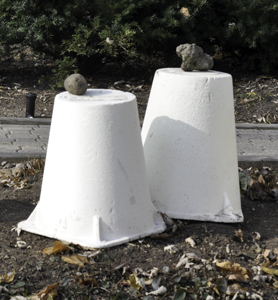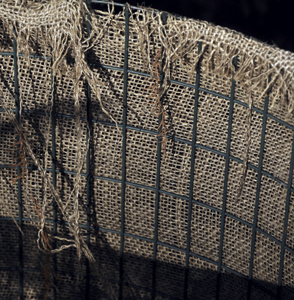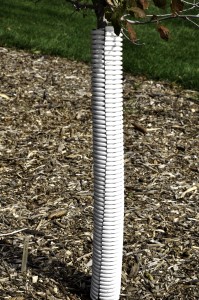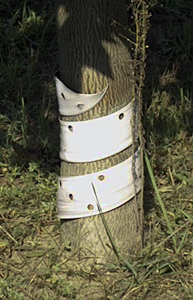 Last week, we talked about the types of injuries and damage sustained by landscape plants in the temperate zones. We looked at the effects of temperatures, drying winds, de-icing salt, rodents, clay soils, etc. Now here are a few methods for avoiding this type of damage in your landscape.
Last week, we talked about the types of injuries and damage sustained by landscape plants in the temperate zones. We looked at the effects of temperatures, drying winds, de-icing salt, rodents, clay soils, etc. Now here are a few methods for avoiding this type of damage in your landscape.
1. Low Temperature Injury – The key to avoiding this problem is to not “stretch the zone” with your plants. This means that, for instance, if you are in USDA Hardiness Zone 6, avoid using plants that are only hardy to Zone 7 or 8. You may get away with this for several years if the winters are warmer than average. However, all that it takes is one night below the “typical” low temperature for your zone and the plant may die. That is a fallacy of people when they think that global warming automatically changes their climate zone. You may, in fact, experience above average temperatures for 364 nights but, if that one night in the dead of winter drops below the hardiness level of the plant…it will still be dead.
The other factor here is the condition of the plant coming off the previous growing season. There is some evidence that plants that were stressed by drought or excessive heat or other factors may not be able to attain their normal level of winter hardiness. Thus, even though the plant is technically hardy for a particular zone, if it comes into the winter under stress, it may still be damaged by “normal” low temperatures.
2. Desiccation Injury – Generally, the key factor in desiccation injury is the type of plant and the direction of the predominate winter winds. As we mentioned before, evergreens, especially broad leaf evergreens like rhododendrons and boxwood, are most likely to sustain this type of damage. Therefore, these types of plants will benefit most from protection from winter winds. This can be done by a temporary wind shield such as burlap fences for rhododendrons and fences, buildings or other more permanent windbreaks may also be used.
3. Frost Cracks – Preventing the penetration of winter sunlight is the object to preventing winter cracks. Smooth, dark, young bark is most susceptible to this damage. So, on newly planted, small trees such as a maple, it might pay to wrap the bark in a light colored material that will reflect the rays of the sun. The key is to remove this wrap after a season or two and either leave it off or replace it if the bark has not yet become rough textured and more “mature”. If the wrap remains on the tree too long, the expansion of the girth of the tree may eventually cause it to cut into the bark and girdle the tree.
4. Snow or Ice Damage – First and foremost, don’t shovel the snow from your driveway or sidewalks onto the top of your landscape plants. Generally, they can handle the weight of a normal snowfall but the added snow may cause damage. If you have tall, upright arborvitae trees, you might need to tie them together with ropes in the fall when they are older and have become very tall and weak. Gently knock off excessive snow cover as soon as the storm is over.
5. Salt Damage – If you must control the ice on sidewalks or driveways with other than mechanical means, always use products labeled as not damaging to plants. Remember that granular fertilizers are also salts and could damage nearby plants if applied excessively for ice control throughout the winter.
6. Heaving – This problem takes a little more work than some of the others. If you have clay soil, you need to incorporate large amounts of organic matter such as compost, leaf mould, clippings, etc. This will help to improve the drainage of such soils. However, this needs to be done before you install your plants. It is pretty tough…though not impossible…to amend the soil after landscape plants, other than annuals, have been put into the ground.
7. Rodent Damage – This is most commonly a problem during extremely cold winters with large amounts of snow on the ground for long periods. Since you can’t predict which winter is going to meet these criteria, you need to take some general steps. One is to avoid piling mulch up against the trunk of the tree. Often mice will burrow in the mulch right up to the tree and chew away in the comfort and security of the mulch. Also, wrapping the trunks of young trees that still have immature bark can also be a deterrent.
8. Early Spring or Early Fall Frosts – Unfortunately, on a practical level, there is not always anything you can do about this type of damage. If you have plants small enough to cover with a tarp or other covering, that can help for a night or two. However, this won’t do much for large shrubs or trees. Remember that the goal of any covering is to keep the temperature of the plant material at least one degree above that needed for the cells to freeze. Unlike animals, plants don’t “feel” the cold. Their cells either freeze and die or they do not freeze and survive. It is that simple.



